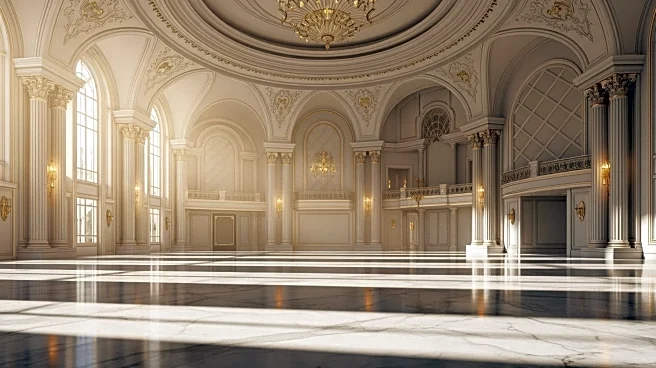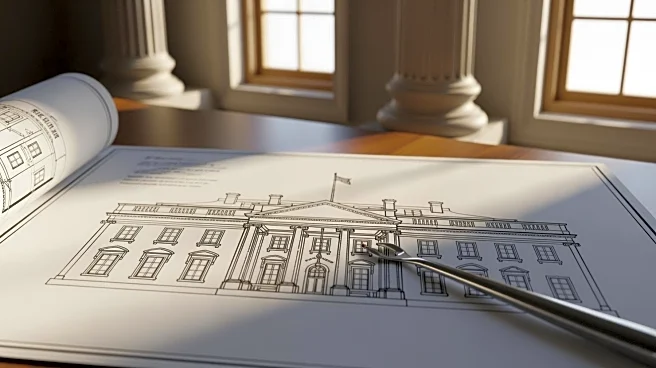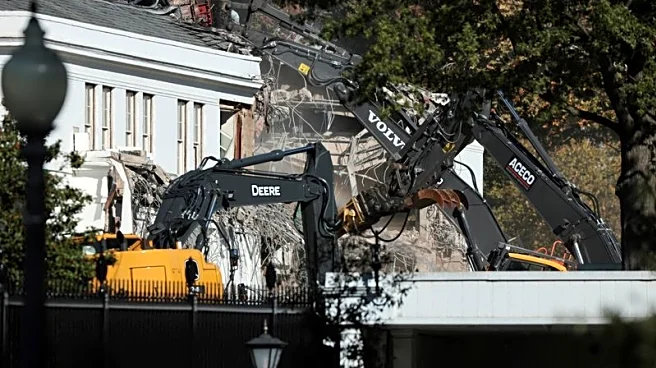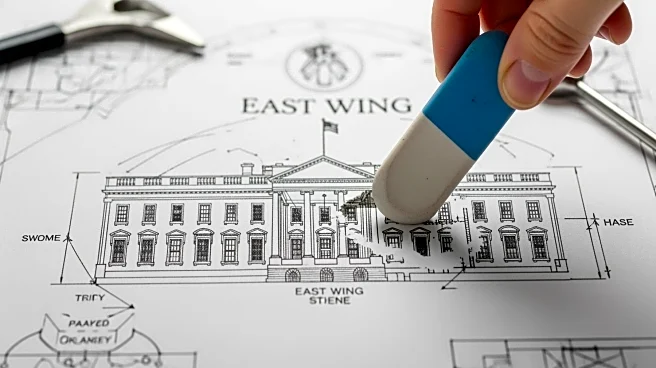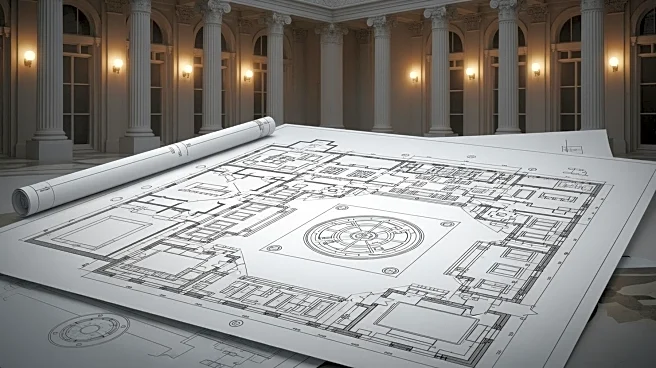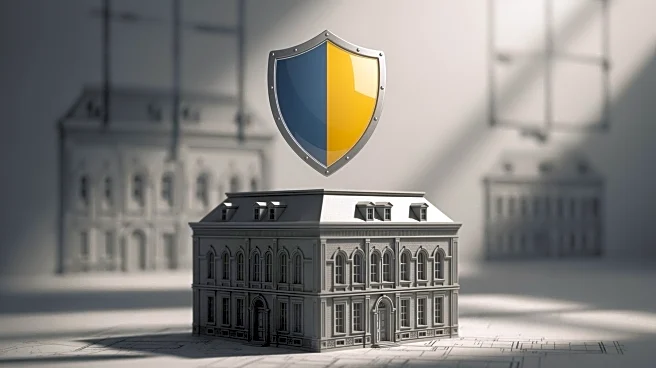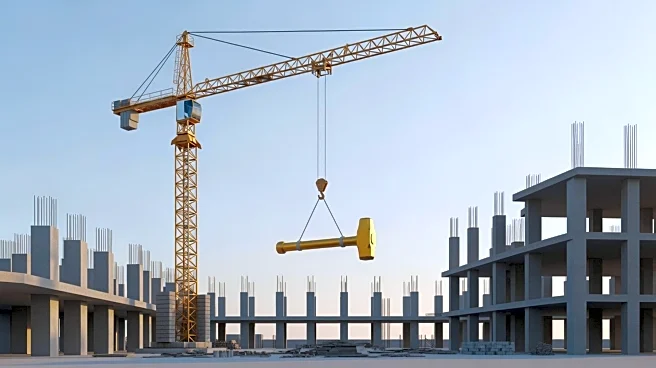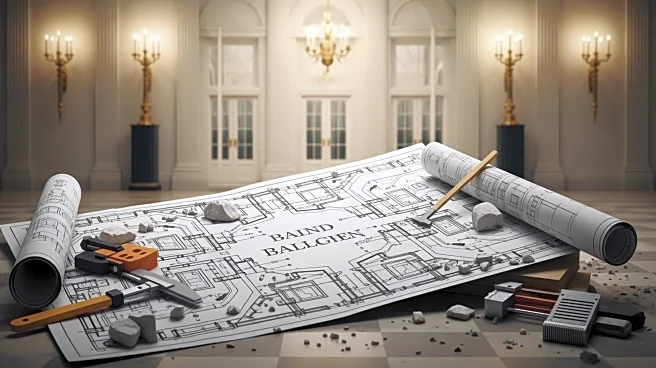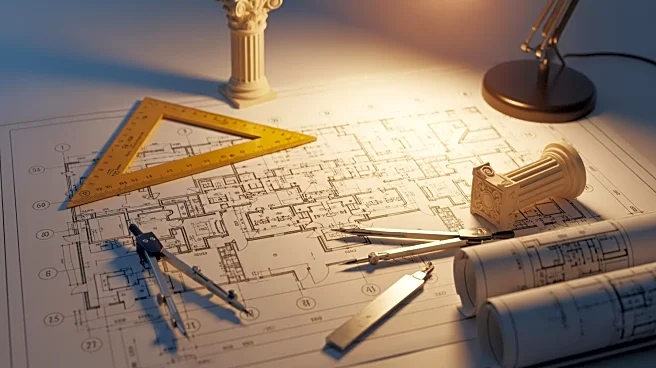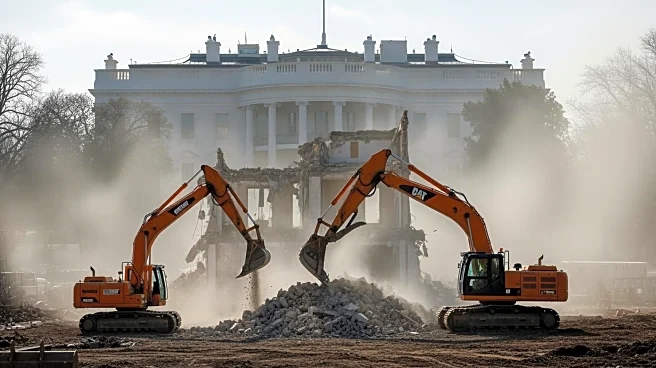What's Happening?
President Donald Trump is moving forward with the demolition of the East Wing of the White House to construct a new ballroom, despite concerns from preservationists. The project, which is expected to cost
$300 million, has been a long-standing ambition of Trump, who has been involved in weekly meetings to expedite the process. The demolition is well underway, with the East Wing's structure being dismantled to make room for the ballroom, which will be larger than initially planned. The White House plans to submit construction plans to the National Capital Planning Commission, although it claims the commission does not have authority over the demolition itself.
Why It's Important?
The demolition of the East Wing represents a significant alteration to the White House, a historic landmark. The project has sparked controversy, with preservationists questioning the legality and transparency of the process. The ballroom is intended to enhance the White House's capacity to host major functions, potentially impacting diplomatic relations and the image of the presidency. The decision to proceed without full public review raises concerns about the preservation of national heritage and the precedent it sets for future modifications to historic sites.
What's Next?
The demolition is expected to be completed by the end of the week, with construction of the ballroom to follow. The White House will need to navigate legal and public scrutiny as it moves forward with the project. The National Capital Planning Commission may become involved once vertical construction begins, potentially influencing the project's timeline and scope. Stakeholders, including preservation groups and political figures, may continue to challenge the project, seeking greater transparency and adherence to historical preservation standards.
Beyond the Headlines
The project highlights the tension between modernization and preservation of historical sites. It raises ethical questions about the extent of presidential authority in altering national landmarks and the role of public input in such decisions. The involvement of private donors in funding the project also underscores the influence of private interests in public affairs, potentially affecting the perception of the presidency and its priorities.
